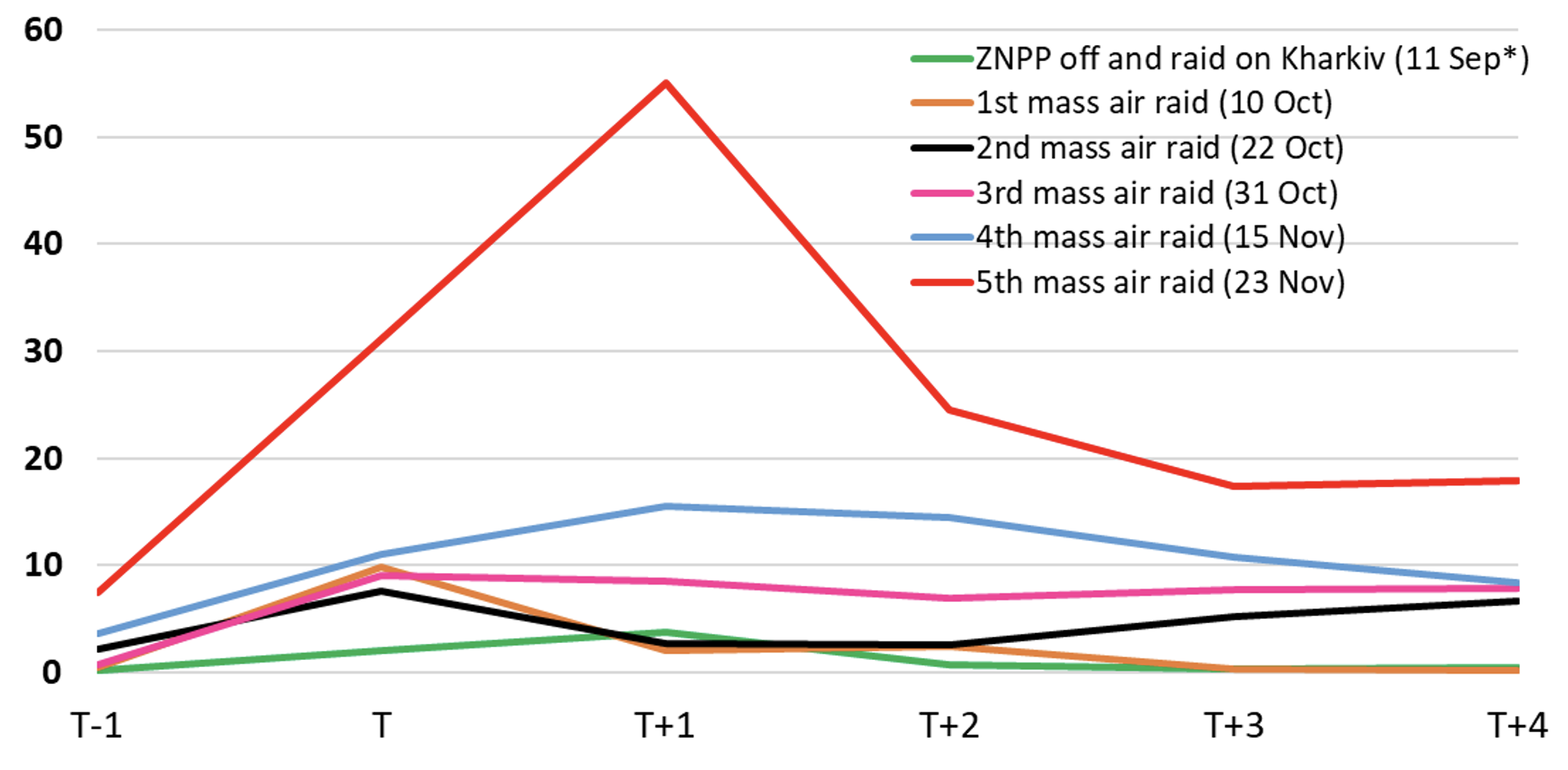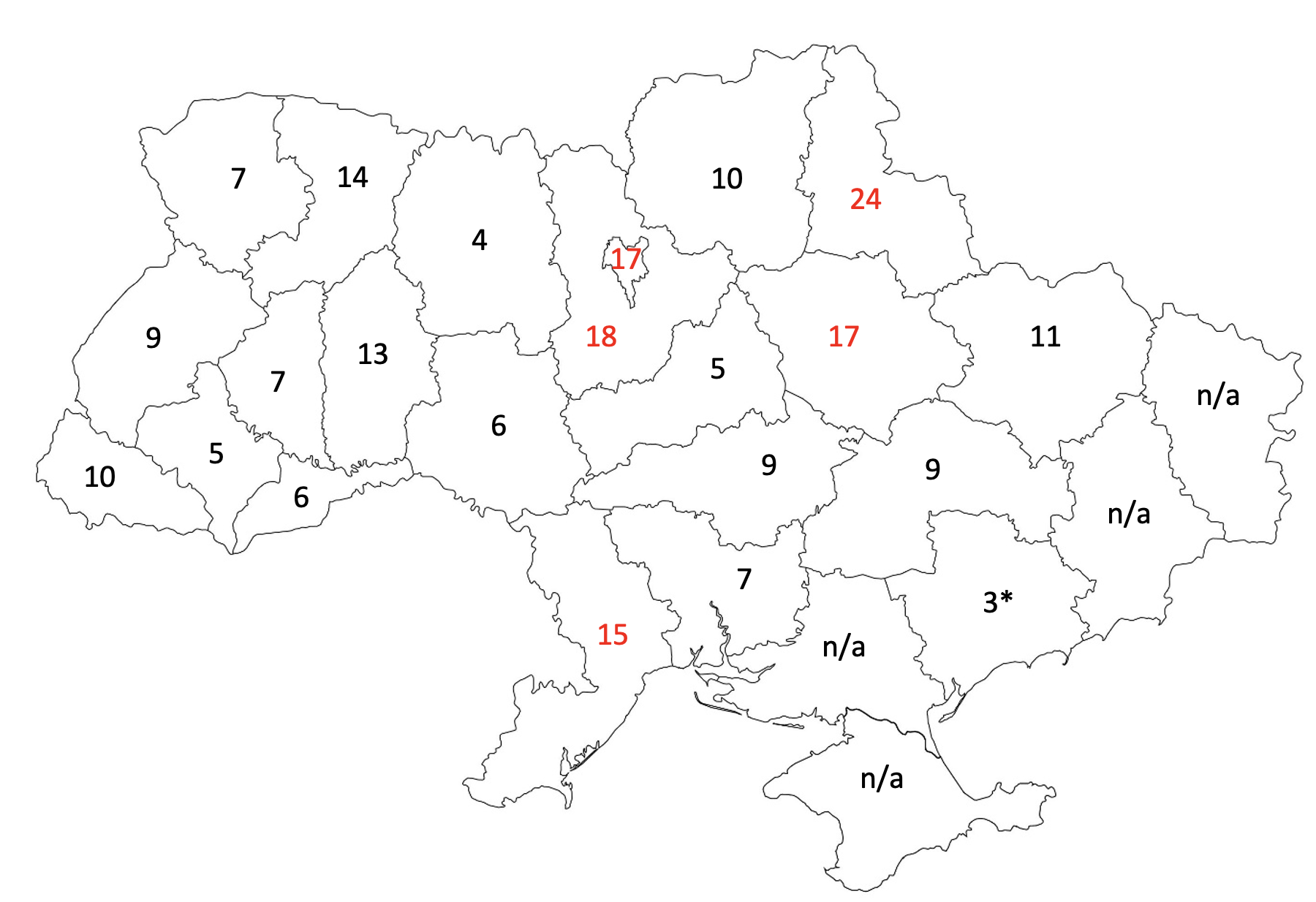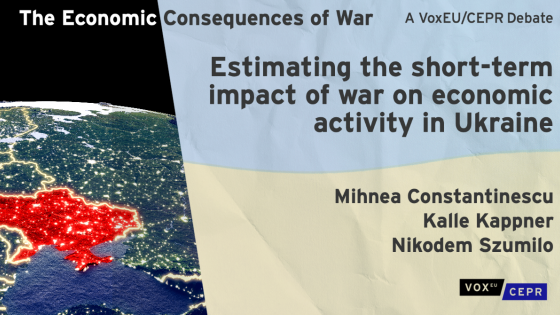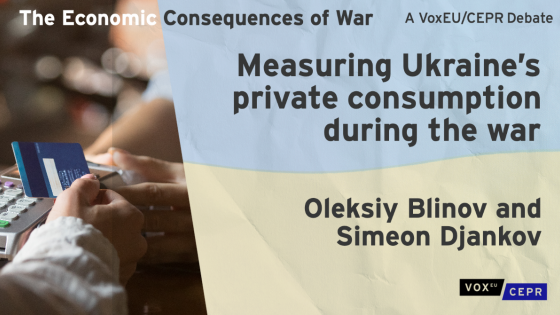In the aftermath of the Ukrainian military’s retaking of significant swaths of territory from the occupying forces in the east and south of the country, Russia has waged a daily wave of attacks on the electrical power infrastructure, causing temporary blackouts across the country. The ferocity of these attacks has no precedent in recent warfare and reliable estimates of its impact on economic activity do not exist. Cross-country estimates show that 0.3% of global GDP is lost due to power outages (Rentschler et al. 2019). However, these estimates are based on short-term power outages that are limited in scale. These outages also tend to happen in economies that are primarily oriented towards agriculture or natural resource extraction.
In this column, we attempt to gauge the impact of power grid damages on Ukraine’s economy by relying on a proxy indicator of such impact. As there is no publicly available data on power outages in Ukraine, we use national-wide power supply data from a network of automatic teller machines (ATMs) to create such a data set. This approximation allows us to quantify the extent of economic damages, opening the door to further modelling of the causality between electricity blackouts and economic activity (and hence GDP forecasts) when there are more precise data available.
This analysis is in the spirit of previous work on estimating the cost of the war in Ukraine (for example, Kappner et al. 2022, Artuc et al. 2022, and the contributions in Rohner et al. 2022). As the aerial attacks on the power infrastructure continue at the time of this writing, estimating their effect on economic performance is an evolving task.
Attacks on the power grid
Ukraine has traditionally had power surplus that has allowed for significant exports of electricity to Moldova and the EU. The Russian invasion caused power consumption to drop by more than 30% year-on-year, while supply has not decreased as much, due to all nuclear power plants (NPPs) remaining operational through the early months of the war.
In September, however, the invading Russian troops intensified their efforts to cut off the Zaporizhzhia nuclear power plant, the largest in Europe, from the Ukrainian grid. This cut-off happened on 11 September. On the same day, there was a series of attacks on thermal power plants in Ukraine’s east. These attacks caused the first wave of blackouts, localised mainly in the Kharkiv region.
Russia then delivered a series of massive air strikes aimed at grid connection facilities of power stations and key power grid substations. Every thermal and hydro power plant in Ukraine has already suffered from such attacks. In October and November 2022, there were five air attack waves on the country’s power infrastructure, each causing widespread shutdowns to allow for repairs.
Measuring the scale of blackouts with ATM data
To gauge the effect of blackouts on the economy, we use daily data from ATMs operated by Sense Bank, one of Ukraine’s biggest commercial banks. The bank has a wide network of around 500 ATMs covering all Ukrainian regions except for the temporarily occupied territories. When electricity is cut off from the ATM or from its data connection, this event is immediately recorded. Another recording takes place when power is restored, providing a good timing record of the lengths of blackouts in the respective geographical area.
We concentrate on the most business-intensive time period between 8am and 8pm. We then use power outage data for every ATM, calculated as a percentage of productive time without power. This measure at the ATM level is then averaged to a regional indicator and in turn we derive the national indicator from these regional measures, using as weights the pre-war shares of regions in Ukraine’s GDP.
We consider this measure to be a good proxy for the loss of economic activity as ATMs are generally placed in bank branches, shopping malls, and big enterprises, which represent a diversified picture of the economy. The use of this proxy comes with a caveat, as the placement of ATMs is biased towards large cities. Thus, it is valuable for estimating the blackouts’ effects on the services and manufacturing sectors, but less so for gauging the impact on agriculture.
Power outages in September to November
The major disruptions to the national power supply started on 11 September, when artillery barrages forced the Zaporizhzhia nuclear power plant to be disconnected from the grid. Attacks on Ukraine’s power grid have become routine since, with five mass air raids recorded in October and November. The attack on 23 November has proven to be the most devastating so far (as of mid-December 2022), resulting in a nation-wide blackout.
Using the methodology outlined above, we have calculated power loss profiles for every major attack during September-November (Figure 1). The national energy system had been resistant to attacks in September and October, localising power outages to certain badly hit communities. On average, only 0.5% productive time was lost in September and 2.3% in October.
Figure 1 Length of power outages caused by attacks in September-November (T is day of attack), % of productive time
Note: * As the raid on Kharkiv’s power grid took place in the evening, 12 September is the T date here. In all other instances, T corresponds to the date shown in the legend.
Source: Authors’ calculations based on commercial bank ATM data.
Damages grew exponentially in November, when the accumulated losses from these attacks were amplified by two strong waves of rocket strikes on 15 and 23 November. The latter resulted in a nation-wide blackout that led to 55% productive time being lost on the next day, 24 November (T+1). With every attack, power grid operators have come up with solutions in only a few days (Figure 1). On the second day after the 23 November attack, productive time losses were reduced from 55% to 25%, stabilising around 17-18% on days three and four after the attack. Overall, Ukraine lost over 12% of its productive time in November, which is a substantial increase compared to September-October. This increase included a loss of over 23% of productive time during the last seven days of the month.
The power outages are spread unevenly across the country. The economy of Kyiv, for example, has suffered significantly as the city is highly dependent on the grid for power supply from nuclear and thermal power stations. In other areas there are complications from the accumulated damage on local power stations, for example in the Sumy region or in the city of Kremenchuk (Poltava region). These differences are substantial across regions (Figure 2).
Figure 2 Percent of productive time lost to power outages in November 2022
Note: * Only for territories controlled by Ukraine (regional capital and a few cities)
Source: Authors’ calculations based on commercial bank ATM data.
Economic impact
Power outages are expected to have a strong negative impact on economic activity. Productive hours are lost, output is disrupted, costs rise as many businesses invest in back-up generation capacity, some enterprises face inventory losses, while other manufacturing facilities have to be stopped fully as these cannot operate under unstable power supply. The power sector itself is a large part of Ukraine’s economy, with its production diminished during the attacks.
The power cuts in September and October were limited and may have had a passing effect on economic trends. We hence align our data on the length of outages in November with other high-frequency data on different sectors of the economy (Table 1). We abstract from seasonal trends in economic output, which should be included in future modelling attempts.
Table 1 Some economic indicators, % month-on-month change in November 2022
Source: State Customs Service of Ukraine, UkrMetalurgProm, UkrAvtoProm, Sense Bank, authors’ estimates.
Two effects stand out in the table. First, there was an import boost in the form of demand for power generating machinery. Second, households cut their card-paid purchases in supermarkets by 9% month-on-month (we have elaborated on domestic demand estimations via point of sale (POS) sales data in a previous Vox column; see Blinov and Djankov 2022). However, part of that decrease likely transformed into cash payments if households still kept cash reserves before the power outages.
Conclusions
Our estimates based on commercial bank data show that losses from power outages were low in September and October, amounting to 0.5% and 2.3% of productive time respectively. However, that significantly changed in the second half of November, when a strong wave of rocket strikes on the power grid caused a national blackout that resulted in a loss of 55% of productive time in a single day.
Beyond the direct effect from the loss of power, there are indirect effects from deciding to stop production altogether in the face of uncertainty or purchasing back-up power at higher cost. The cost to the power sector itself is not accounted for in this estimation.
The impact of power outages on the economic development in Ukraine has emerged as an important topic for further research. So far, high frequency analysis for November have revealed significant economic effects. It is important to note that major blackouts took place at the end of that month, and lower temperatures of winter bring additional demand for power. This means that December and January data will be critical for estimating the economic effects of blackouts in Ukraine. Beyond the immediate effect on monthly economic production, the attacks on power facilities put in doubt the 2023 GDP forecast.
References
Artuc, E, N Gomez Parra and H Onder (2022), “Estimating the true cost of war: The conflict in Eastern Ukraine (2014-2019)”, VoxEU.org, 10 December.
Blinov, O and S Djankov (2022), “Measuring Ukraine’s Private Consumption during the War”, VoxEU.org, 24 July.
Constantinescu, M (2022), “The economic impact of the war in Ukraine. How do we estimate the change in GDP?”, VoxEU.org, 26 July.
Kappner, K, N Szumilo and M Constantinescu (2022), “Estimating the short-term impact of war on economic activity in Ukraine”, VoxEU.org, 21 June.
Rentschler, J, M Kornejew, S Hallegatte, J Braese and M Obolensky (2019), “Underutilized Potential. The Business Costs of Unreliable Infrastructure in Developing Countries”, World Bank Policy Research Working Paper, April.
Rohner, D, B Weder di Mauro and L Garicano (2022), Global Economic Consequences of the War in Ukraine: Sanctions, Supply Chains and Sustainability, VoxEU.org, 14 September.
Tapia, A, M Suarez, J Ramirez-Marquez and K Barker (2019), “Evaluating and Visualizing the Economic Impact of Commercial Districts Due to an Electric Power Network Disruption”, Risk Analysis 39(9).







